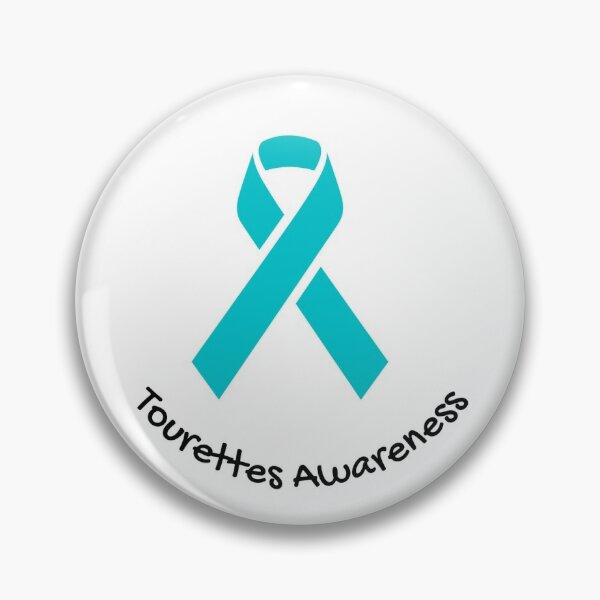May 15 to June 15 marks the annual Tourette Syndrome Awareness Month, a time dedicated to raising awareness for this neurological condition. Tourette Syndrome is a hereditary childhood-onset disorder that causes sudden, uncontrollable movements and sounds called tics, which can be physically, emotionally, and socially debilitating. During this month, the Tourette Association of America encourages people to participate in various events and spread awareness through social media and other platforms. Let us learn more about Tourette Syndrome and how we can help those affected by it during this awareness month.
I. Introduction
Definition of Tourette Syndrome Awareness Month
Tourette Syndrome Awareness Month is an annual event observed from May 15 to June 15. During this time, various health organizations come together to raise awareness about Tourette Syndrome and Tic Disorders. It serves as an opportunity to educate people, break the stigma, and provide support to those affected by the condition. This month-long celebration aims to make people more aware of the symptoms, effects, and management of Tourette Syndrome and Tic Disorders. By spreading awareness and knowledge, we can work towards a world where everyone can #TicFreely. [1][2]
Purpose of raising awareness
The purpose of raising awareness during Tourette Syndrome Awareness Month is to educate the public about Tourette Syndrome and Tic Disorders, the impact they have on individuals and their families, and the need for support and understanding. By raising awareness, we can help to reduce stigma and promote acceptance of those living with these conditions. It’s important to recognize that many people with Tourette Syndrome and Tic Disorders face daily challenges, and by spreading awareness, we can help create a more inclusive and accepting world. [3][4]
II. Information about Tourette Syndrome and Tic Disorders
Description of Tourette Syndrome and Tic Disorders
Tourette Syndrome (TS) is a neurological disorder characterized by tics – sudden and repetitive involuntary movements or vocalizations. Tics may be simple, such as eye blinking or throat clearing, or more complex, involving several muscles and vocalizations. The onset of TS is typically in childhood, and it affects more boys than girls. Although there is no cure for TS, it can be managed through medication and therapy. It is important to raise awareness of TS to reduce stigma and increase support for individuals with the disorder. [5][6]
Effects of TS and tics on individuals
Living with Tourette Syndrome or tic disorders can significantly impact individuals both physically and emotionally. Tics can be painful, cause exhaustion, and interfere with everyday activities. Socially, individuals with TS may feel isolated or misunderstood due to public misconceptions. TS can also co-occur with other neurological and psychological conditions like ADHD, OCD, anxiety disorders, and depression. However, with proper treatment and support, individuals with TS can live fulfilling lives and achieve their goals. It’s crucial to raise awareness about the disorder and advocate for improved research, treatments, and acceptance in society. [7][8]
Facts about TS and Tic Disorders
Tourette Syndrome is a neurological disorder that causes individuals to have tics, which can be physical movements or sounds that they can’t control. It is estimated that one in 100 children have some form of Tourette Syndrome or a tic disorder. TS can be emotionally, physically, and socially debilitating, affecting both children and adults. It often co-occurs with other conditions such as ADD, ADHD, OCD, anxiety disorders, and dysgraphia. Despite misconceptions, there is currently no cure for TS, and there are no drugs specifically made for it. However, specialized behavior therapies such as CBIT can help individuals learn to manage their tics better. [9][10]
III. Ways to Participate and Support Tourette Syndrome Awareness Month
Take Action Letter for advocacy
Taking action during Tourette Syndrome Awareness Month can be as simple as writing a letter to your representatives in Congress. By advocating for increased funding specifically for Tourette Syndrome research and data collection, we can make a difference and raise awareness for this disorder and other Tic Disorders. The Tourette Association of America has even provided an easy-to-use form letter that you can personalize to share your own personal story and make your voice heard. Encourage your friends and family to also write letters and join the movement to support this important cause. [11][12]
Teal Tuesdays to show support on social media
One fun and creative way to show your support for Tourette Syndrome Awareness Month is by participating in Teal Tuesdays! Simply wear teal from head to toe and post your pictures on social media using the hashtag #TouretteAwarenessMonth. You can get creative with your outfits, accessories, and even paint your face or nails with teal colors. Teal Tuesdays is a great way to spread the word and raise awareness for Tourette Syndrome and Tic Disorders in a fun, interactive way. Join the movement and show the world that you support the Tourette community! [13][14]
Joining local TAA chapters or support groups
Joining local TAA chapters or support groups can be incredibly helpful for those affected by Tourette Syndrome and Tic Disorders. These groups offer a sense of community and understanding, as well as access to valuable resources and information. At these meetings, individuals can connect with others who understand what they’re going through and receive support from those who have been in similar situations. Plus, through these groups, you can get involved in advocacy efforts and help raise awareness about Tourette Syndrome and Tic Disorders. So why not join your local TAA chapter or support group today and be a part of a community that supports you? [15][16]
Spreading awareness through local businesses
One of the easiest ways to spread Tourette Syndrome awareness in your local community is through local businesses. You can approach your favorite coffee shop, boutique, or restaurant and ask them to display flyers or posters about Tourette Syndrome. You can even ask them to consider selling TAA merchandise to help support the cause. It’s a win-win situation, as both the business and the Tourette Syndrome community get exposure. Together, we can bring positive change and help people #TicFreely. [17][18]
Shopping at TAA store for merchandise
If you’re looking for a way to show your support for Tourette Syndrome awareness, consider checking out the Tourette Association of America’s online store. They have a variety of merchandise available, from t-shirts and tote bags to wristbands and lapel pins, all with the TAA logo and the message #itsnotwhatyouthink. Plus, a portion of every purchase goes towards supporting research and spreading awareness. Not only will you be able to show your support, but you’ll also be helping a great cause. [19][20]
V. History of Tourette Syndrome
The history of the disorder and its naming
Tourette Syndrome, also known as Tourette’s disorder, was first described in detail by French neurologist Georges Gilles de la Tourette in 1885. This eponymous disease, coined by Jean-Martin Charcot, is a neurological disorder characterized by involuntary movements and vocalizations called tics. The exact cause of Tourette’s syndrome is not yet known; however, research in genetics, neuroimaging, and neurophysiology is providing insight into the disorder. Despite this progress, Tourette’s still poses a challenge for patients, families, and healthcare providers. By raising awareness and promoting advocacy efforts, we can help alleviate the impact of the disorder on individuals and lend support towards ongoing research and treatment. [21][22]
Recognition of Tourette Syndrome as a rare disorder in the US
Tourette Syndrome was recognized as a rare disorder in the US in 1983 under the Orphan Drug Act. This act provides incentives to pharmaceutical companies to develop medications for rare diseases. Despite being rare, TS affects over 200,000 Americans and is often misunderstood or stigmatized. Raising awareness during Tourette Syndrome Awareness Month is crucial in promoting understanding and support for those with TS and tic disorders. Joining the movement can make a difference in recognizing Tourette Syndrome as a legitimate disorder deserving of attention and resources. [23][24]
Prevalence of Tourette Syndrome and Tic Disorders
According to recent studies, Tourette Syndrome and Tic Disorders affect up to 1 percent of the population. In the United States alone, about 174,000 children have received a diagnosis of Tourette Syndrome, and it’s estimated that about half of children with Tourette Syndrome may not be diagnosed. Males are more commonly affected than females, with a ratio of 3:1 to 4:1. It’s important to raise awareness about Tourette Syndrome and Tic Disorders so that people can recognize the symptoms and seek appropriate care. [25][26]
VI. Conclusion
Recap of Tourette Syndrome Awareness Month and the impact of raising awareness
In conclusion, Tourette Syndrome Awareness Month is a movement that aims to bring awareness to Tourette Syndrome and Tic Disorders. It is observed from May 15 to June 15 every year. Throughout this period, people are encouraged to participate in different ways to make a lasting impact globally. The history of the disorder and its naming has evolved over time, with the United States recognizing it as a rare disorder in 1983. By raising awareness, we can help support research and develop new ways to support the over 1 million Americans affected by Tourette Syndrome and Tic Disorders. Join the movement and continue to show support for this cause. [27][28]
Invitation to join the movement and continue to support the cause.
Joining the Tourette Syndrome Awareness movement can begin with small steps such as participating in Teal Tuesdays on social media, shopping at TAA stores for merchandise, and joining local support groups or chapters. By spreading awareness through local businesses and advocating for recognition of Tourette Syndrome as a rare disorder, we can make a significant impact on the lives of those affected by TS and tic disorders. Let’s continue to support the cause and raise awareness for Tourette Syndrome beyond the designated Awareness Month. Together, we can make a difference. [29][30]

